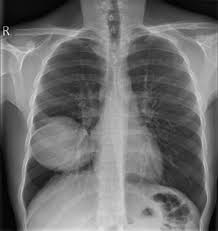Consultant doctor will work with patient to decide when he/she will ready to go home. Most patients need to stay overnight. Whole the staying procedure totally depends upon patient recovery time interval.
Review and follow each and every instruction from the consultant doctors, nurses, dietician, cardiac rehab specialist or any other healthcare professionals.
Fill all prescriptions so patient’s can take medications on schedule as soon as he/she get home.
Make arrangements to have someone with the patient or available to help for the next at least two days.
Even if patient feels great, take all the medications which are prescribed by consultant cardiologist and primary care doctor. It is extremely important that patient take any anti-clotting medicines in the amount and as frequently as directed by cardiologist for as long as your cardiologist says. These medications are your primary defense against blood clots, heart attack and stroke.
DO NOT STOP taking any heart medications (especially anti-clotting or anti-platelet medications) without talking to consultant cardiologist first these medications are absolutely essential for preventing heart attacks in the future. Cardiologist will tell to the patient how long patient need to take them.
If patient have chest pain or other symptoms similar to what patient brought in the hospital, report it immediately to consultant doctor.

Keep an eye on the entry point for the procedure patient’s elbow, wrist or groin. Patient should not have any bleeding after he/she leave the hospital. If patient are not able to stop the bleeding through pressure consult with the doctor.
A hematoma is a collection of blood under the skin that might be painful. It will look like a lump under the skin. The size of the lump may vary. A lump smaller than a pecan that is not enlarging can be watched, but any lump larger than a pecan should be reported to consultant cardiologist
Infection is extremely rare after angioplasty, but if patient are suspect with infection or develop a rash of any kind, tell to the doctor.
In general, people who have angioplasty can walk around within 6 hours after the procedure. Complete recovery takes a week or less. Keep the area where the catheter was inserted dry for 24 to 48 hours.

If the doctor put the catheter into patient’s groin:
If the doctor put the catheter in patient’s arm or wrist:
For a catheter in your groin, arm, or wrist:
Patient will need to care for regarding incision.
Angioplasty does not cure the cause of the blockage in arteries. Patient’s arteries may become narrow again. Eat a heart-healthy diet, exercise, stop smoking (if patient smoke) and reduce stress which can help to reduce the further chance of blockage inside coronary artries. Doctor may prescribe medicine to the patient to help lower cholesterol.
Most people take aspirin together with another antiplatelet medicine such as clopidogrel (Plavix), prasugrel (Efient), or ticagrelor (Brilinta) after this procedure. These medicines are blood thinners. They keep patient’s blood far from clotting in arteries and stent. A blood clot can lead to a heart attack. DO NOT stop taking them without talking medicine without any guidance.
Make sure you have a follow-up appointment scheduled with consultant (cardiologist).
Consultant cardiologist doctor may refer patient to a cardiac rehabilitation program. This will help patient how to slowly increase the exercise, how to take care from angina and care from heart attack.
Best Health Packages for more information visit here :- https://www.docopd.com/en-in/lab